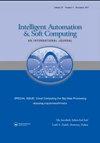An Improved Genetic Algorithm for Automated Convolutional Neural Network Design
IF 2
4区 计算机科学
Q2 Computer Science
引用次数: 2
Abstract
Extracting the features from an image is a cumbersome task. Initially, this task was performed by domain experts through a process known as handcrafted feature design. A deep embedding technique known as convolutional neural networks (CNNs) later solved this problem by introducing the feature learning concept, through which the CNN is directly provided with images. This CNN then learns the features of the image, which are subsequently given as input to the further layers for an intended task like classification. CNNs have demonstrated astonishing performance in several practicable applications in the last few years. Nevertheless, the pursuance of CNNs primarily depends upon their architecture, which is handcrafted by domain expertise and type of investigated problem. On the other hand, for researchers who do not have proficiency in using CNNs, it has been very difficult to explore this topic in their problem statements. In this paper, we have come up with a rank and gradient descent-based optimized genetic algorithm to automatically find the architecture design of CNNs that is vigorously competent in exploring the best CNN architecture for maneuvering the tasks of image classification. In the proposed algorithm, there is no requirement for handcrafted preand post-processing, which implies that the algorithm is fully mechanized. The validation of the proposed algorithm on conventional benchmarked datasets has been done by comparing the run time of a graphics processing unit (GPU) throughout the training process and assessing the accuracy of various measures. The experimental results show that the proposed algorithm accomplishes better and more persistent ‘classification accuracy’ than the original genetic algorithm on the CIFAR datasets by using fifty percent less intensive computing resources for training the individual CNN and the entire population.一种用于自动卷积神经网络设计的改进遗传算法
从图像中提取特征是一项繁琐的任务。最初,这项任务是由领域专家通过一个称为手工特征设计的过程来完成的。后来,一种被称为卷积神经网络(CNN)的深度嵌入技术通过引入特征学习概念解决了这个问题,通过卷积神经网络直接向CNN提供图像。然后,这个CNN学习图像的特征,这些特征随后被作为输入输入到进一步的层,以完成预期的任务,如分类。在过去的几年中,cnn在一些实际应用中表现出了惊人的性能。然而,对cnn的追求主要取决于它们的架构,这是由领域专业知识和研究问题的类型手工制作的。另一方面,对于不熟练使用cnn的研究人员来说,在他们的问题陈述中探索这个主题是非常困难的。在本文中,我们提出了一种基于秩和梯度下降的优化遗传算法,以自动找到CNN的架构设计,该设计能够有力地探索最佳的CNN架构,以操纵图像分类任务。在该算法中,不需要手工预处理和后处理,意味着该算法是完全机械化的。通过比较图形处理单元(GPU)在整个训练过程中的运行时间和评估各种度量的准确性,在传统基准数据集上验证了所提出的算法。实验结果表明,该算法在CIFAR数据集上比原遗传算法获得了更好、更持久的“分类精度”,在训练单个CNN和整个种群时使用的计算资源减少了50%。
本文章由计算机程序翻译,如有差异,请以英文原文为准。
求助全文
约1分钟内获得全文
求助全文
来源期刊

Intelligent Automation and Soft Computing
工程技术-计算机:人工智能
CiteScore
3.50
自引率
10.00%
发文量
429
审稿时长
10.8 months
期刊介绍:
An International Journal seeks to provide a common forum for the dissemination of accurate results about the world of intelligent automation, artificial intelligence, computer science, control, intelligent data science, modeling and systems engineering. It is intended that the articles published in the journal will encompass both the short and the long term effects of soft computing and other related fields such as robotics, control, computer, vision, speech recognition, pattern recognition, data mining, big data, data analytics, machine intelligence, cyber security and deep learning. It further hopes it will address the existing and emerging relationships between automation, systems engineering, system of systems engineering and soft computing. The journal will publish original and survey papers on artificial intelligence, intelligent automation and computer engineering with an emphasis on current and potential applications of soft computing. It will have a broad interest in all engineering disciplines, computer science, and related technological fields such as medicine, biology operations research, technology management, agriculture and information technology.
 求助内容:
求助内容: 应助结果提醒方式:
应助结果提醒方式:


